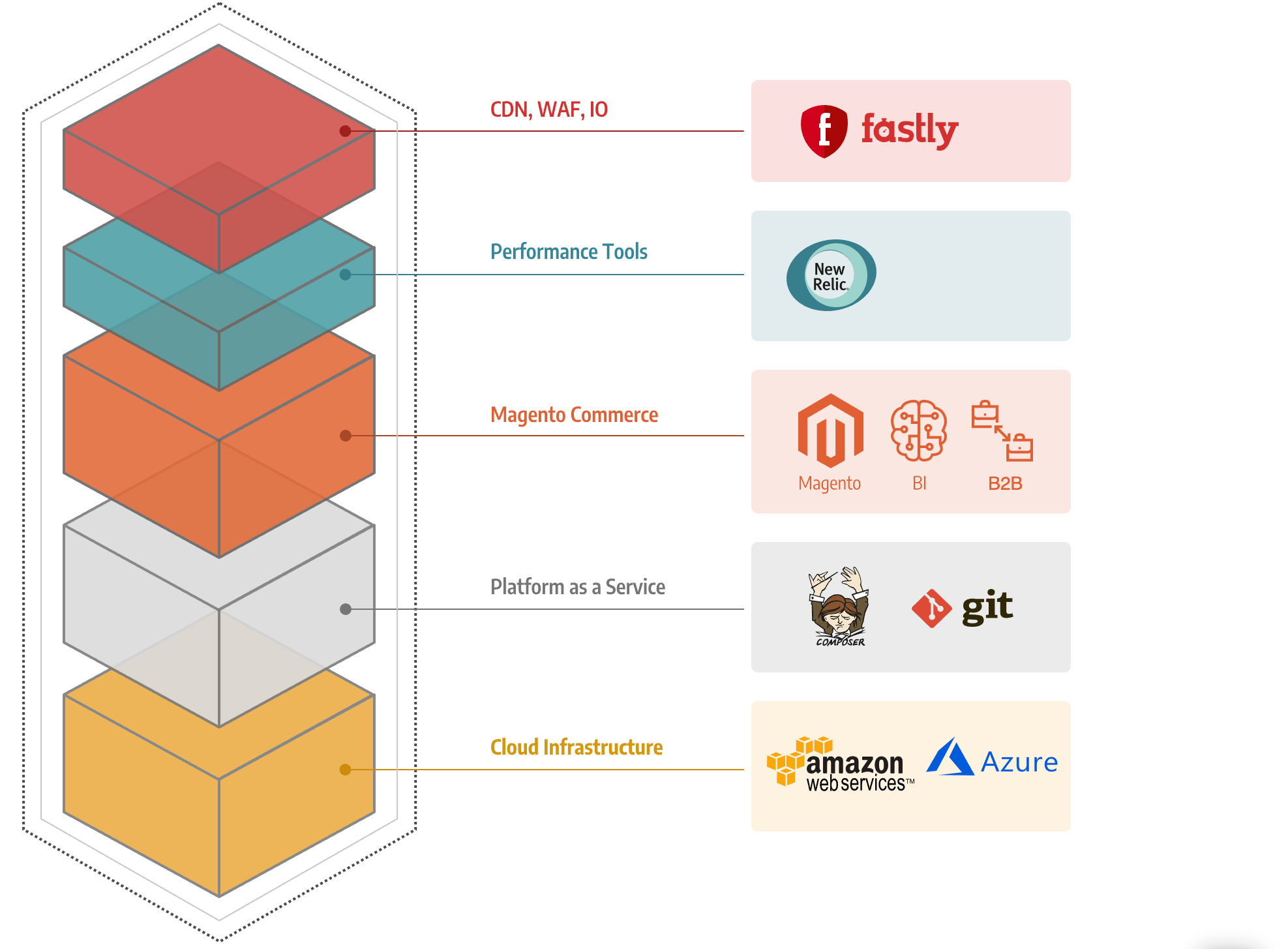Adobe Commerce (formerly Magento) is one of the leading website platforms available, and for good reason. Adobe Commerce and Magento Open Source share a lot of the same foundation and there can be some confusion about which platform will best meet a business’ ecommerce needs. Which one should you choose? We’ll walk you through a comparison of the two options, but first, let’s start with how they are similar.
Both Magento Open Source and Adobe Commerce are characterized by their open-source platform. While this means enhanced customization ability and the ability to extend your website over time, it also means that your ecommerce website won’t be up and running from the moment of installation and you will need developer support.
Some of the features shared by both Adobe Commerce and Magento Open Source include integrated checkout, payment, shipping, full-page caching, global selling, catalog management, CMS page builders, marketing tools, analytics, customer accounts, and common technology stacks such as PHP.
Curious how Adobe Commerce stacks up against other ecommerce platforms? Check out our free Ecommerce Platform Comparison Guide to learn more.
When is Adobe Commerce the right choice?
Adobe Commerce is a fully-licensed product from Adobe and offers a more scalable system than Magento Open Source. While Adobe Commerce also offers beneficial tools for marketing and customer loyalty management, what you’re really paying for with an Adobe Commerce license is the ability to confidently maintain and manage a high-performance, high-activity website.
Adobe Commerce is a great option if you are a business with a complex website, a large product catalog, or if you have extended customization needs, require specialized B2B features, or are expecting large growth and want extended scalability now and in the future as your website continues to grow. Although Adobe Commerce requires a paid license, it comes with many elevated capabilities.
Key Adobe Commerce Features
Adobe Commerce allows you to create impeccable B2C and B2B shopping experiences with plenty of out-of-the-box features. Here are some of the key features that we think make Adobe Commerce stand out.
- Multiple stores, multiple brands from a single platform: Even with multiple digital channels, you can use one platform to manage all your brands and serve business and consumer customers.
- Specialized B2B capabilities: Cultivate custom catalogs and pricing along with personalized experiences and customer portals for a better B2B buying experience.
- Ability to fully customize the customer experience: Whether it's omnichannel fulfillment options, specialized promotions, or self-service convenience, you can personalize shopping to meet the needs of your customers and your business.
- Page Builder (CMS): Create and launch intriguing content on your site for superior shopping experiences.
- Automated recommendations: You’ll have the ability to create AI-generated recommendations based on a shopper's unique behavior and product similarity.
- Live search, integrated Elasticsearch, and OpenSearch: Functions like Live Search provide better search tools that allow for smarter, faster, and more relevant results to B2C shoppers.
- Multi-origin sales, BOPIS: It’s simple to set up the Buy Online, Pick up at Store (BOPIS) function, even if you have multiple store locations, central fulfillment, and a few drop-shippers all as “origin points”.
- Unique business intelligence and reporting application: You can turn your data into visual reports that can be utilized in custom dashboards to streamline your analytics. This includes automated report updates, data export options, and numerous user roles.
- Mobile, PWA, headless experiences: These are experiences that are agile, fast, and flexible, allowing you to deliver consistent customer experiences no matter the channel or the device.
A key benefit of Adobe Commerce is its scalability. Adobe Commerce can be deployed on premise (self-hosted), however the majority of our clients Adobe Commerce on cloud infrastructure which offloads all hosting, server, and platform support to Adobe.

If you exclude the license fees for Adobe Commerce, the total cost of ownership will be similar between Magento Open Source and Adobe Commerce as both require development support, ongoing patching and upgrades, and customization. You can read more about the total cost of ownership of Adobe Commerce in our blog.
When is Magento Open Source the right choice?
Rarely. Magento Open Source is a free version of the platform that doesn’t require you to pay licensing fees. You can download it for free, and it requires that you set up and maintain your own hosting account at a hosting provider. Additional customization options or services that you might need down the road as your business grows could cost more if you may find you’re outgrowing the platform.
Magento Open Source is positioned as a platform for developers to familiarize themselves with the Magento system and smaller-scale businesses. Magento Open Source, like Adobe Commerce, is customizable thanks to its open-source build, and could be a viable option for some smaller businesses with the right web development support. Unlike Adobe Commerce, however, Open Source doesn’t offer the same resources that boost scalability and performance for larger, more complex websites.
While historically we recommended Magento Open Source for clients who are highly price sensitive, there are now better SaaS platforms on the market to address these simple stores.
In conclusion
If it’s a viable fit for a business, we recommend most customers consider the Adobe Commerce platform first—it’s where Adobe is focused, where the most active development is happening, it includes bundled hosting, and is the full-featured platform.
No matter whether you choose Adobe Commerce or Magento Open Source, you’ll need to work with developers who are familiar with the platform and can customize it to your business’ specifications. If you’re still not sure which platform is right for you, feel free to contact us with any questions and we’ll be happy to help.
